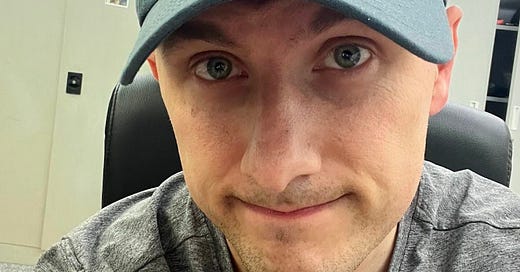As I near the final phase of this deployment, I find myself in a reflective if not melancholy state of mind—not just about the past six months but about my entire career in the Air Force. Deployments have a strange way of distorting time, feeling like a blur/wormhole, with far too much time to dive deeper into my thoughts on leadership and the patterns I’ve seen over the years. Buckle up party ppl.
There’s a common saying that we learn just as much—if not more—from poor leaders as we do from great ones. But I think there’s something more nuanced here, something worth exploring.
The Most Dangerous Poor Leaders Aren’t the Obvious Ones
A poor leader isn’t defined by their competence, skill, or even reputation. The defining factor is character.
But here’s where it gets interesting: not all poor leaders look the same. In my experience, they tend to fall into two distinct categories:
1️⃣ The Obvious Poor Leader – They lack both character and interpersonal skills. Their selfishness, incompetence, and lack of care for others are immediately evident. Their subordinates see through them quickly, and so do their superiors—making their impact frustrating but limited.
2️⃣ The “Competent” Poor Leader – This is the dangerous one. These leaders have poor character but excellent interpersonal skills. They’re emotionally intelligent, socially savvy, and know exactly how to say the right things to the right people. They master the art of self-promotion, carefully curating their reputation while doing little to develop their team or accomplish the mission. Their talent for managing up makes it incredibly difficult for those above them to see the damage they cause below.
The second type is far more insidious. Because they’re competent at appearing competent, they create a wake of damage that often goes unchecked.
A Monkey High in the Tree
The Competent Poor Leader is like a monkey high in a tree.
At the top of the tree, the monkey looks impressive—swinging from branch to branch, putting on a show, always in motion, working late every day. From this vantage point, leaders higher up in the chain of command only see the performance: the confidence, the polished facade. But those below? They see the monkey’s ugly butt. (Cleaning up the metaphor a lil here) They experience the condescension, the lack of accountability, the lack of true leadership. They deal with the fallout of decisions made for optics rather than impact.
The Responsibility We Often Ignore
Here’s the hard part: I’ve been in situations where I’ve known the truth about a leader’s character but hesitated to speak up. I’ve held back because I didn’t want to seem unprofessional, to be labeled as someone who complains, or "stirs the pot."
But what I’ve come to realize is that silence enables harm. When a poor leader is skilled at masking their character, those of us who see through the facade have a responsibility to communicate what we know to those in a position to minimize the damage.
That doesn’t mean gossiping or taking a reckless approach. It means having the courage to speak truthfully and professionally to the right people at the right time. Because if we don’t, we leave the door open for these leaders to continue prioritizing their own success over the people and mission they were entrusted to serve.
💡 Parting Shot 💡
So how do we handle those we know should not be leading? If you’ve ever worked under a leader whose true character was hidden behind charisma, you know the damage they can do. The question is: when the opportunity arises, will you have the courage to make sure the right people know the truth?
MTFBWY
-Riley






'I’ve held back because I didn’t want to seem unprofessional, to be labeled as someone who complains, or "stirs the pot." ' THIS is something any of us with value and care for our work and colleagues, will have felt at some point.